Speedy Tuesday – OMEGA Speedmaster Mark III
Omega’s remarkable first automatic chronograph
In 1971, Omega launched the Speedmaster Mark III Automatic, the first automatic chronograph of the brand. It was presented as the next step in the Speedmaster-series: a self-winding Speedmaster. The watch featured the new, automatic chronograph movement c 1040, housed in a funky chunk of steel. In retrospect, there is a lot to love about the Omega Speedmaster Mark III, its ridiculous case and the inconsistent Mark-line.
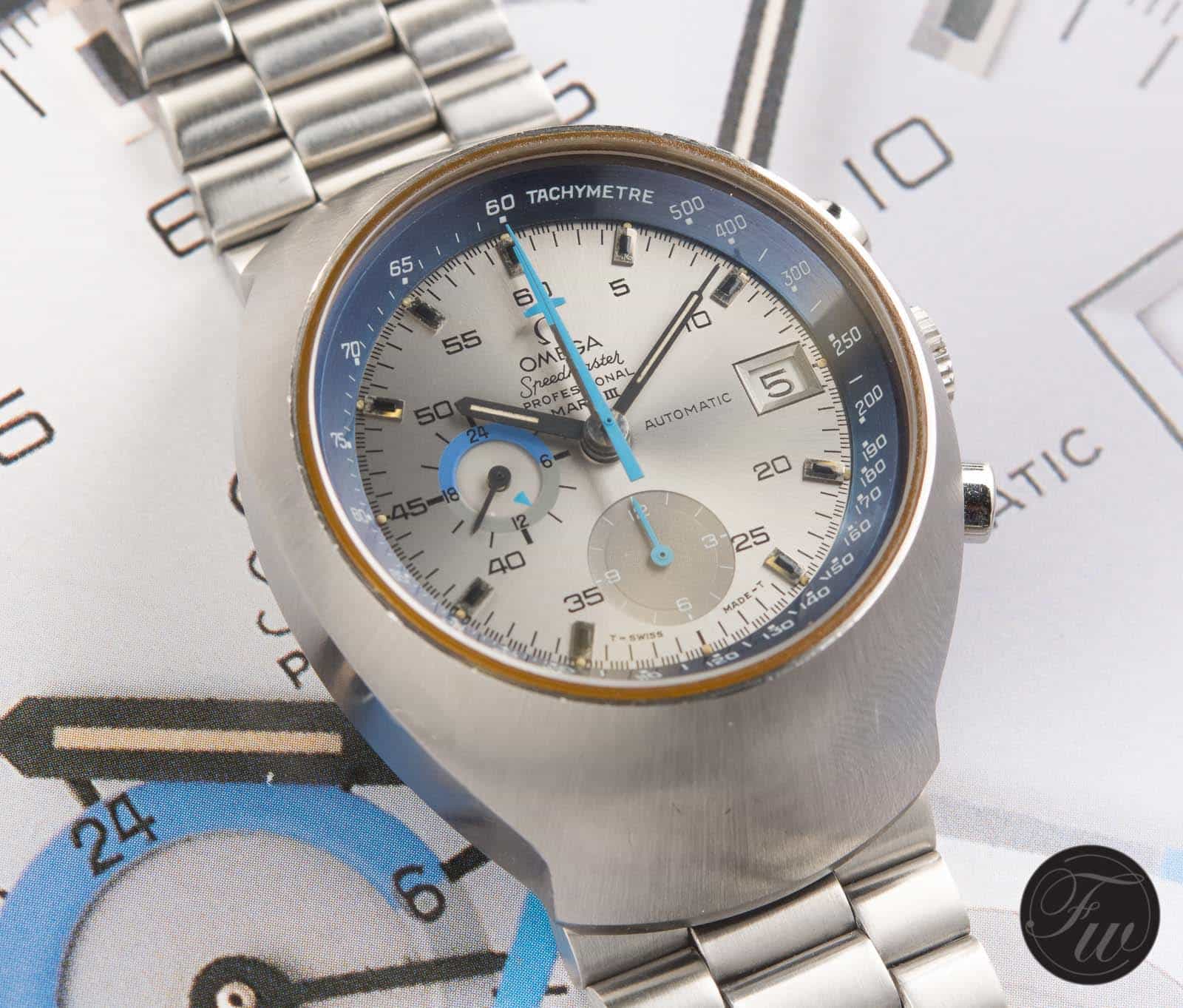
Omega Speedmaster Mark III
The automatic chronograph became available to the public in 1969 by Zenith, while Breitling and Heuer/Leonidas were also completing their versions (ChronoMatic). Seiko had already released the very first automatic chronograph (caliber 6139) earlier in 1969, however only available to the Japanese market. Omega’s first automatic chronograph movement, calibre 1040, had been developed with Lemania and was presented in 1971 in the Omega Speedmaster Mark III. The central rotor winding automatic chronograph, with a diameter of 13 3/4 lines and a height of 8 mm, featured a central 60 minutes counter (the ‘jet’ hand), a central ‘stopwatch’ hand counting a minute in 5ths of a second, a 12-hrs counter at 6 o’clock, a double counter at 9 o’clock and a date at 3. The double counter at 9 consisted of a continuous seconds counter and a 24-hrs dial showing day or night. It is possible that the huge case was built to house this thick movement.
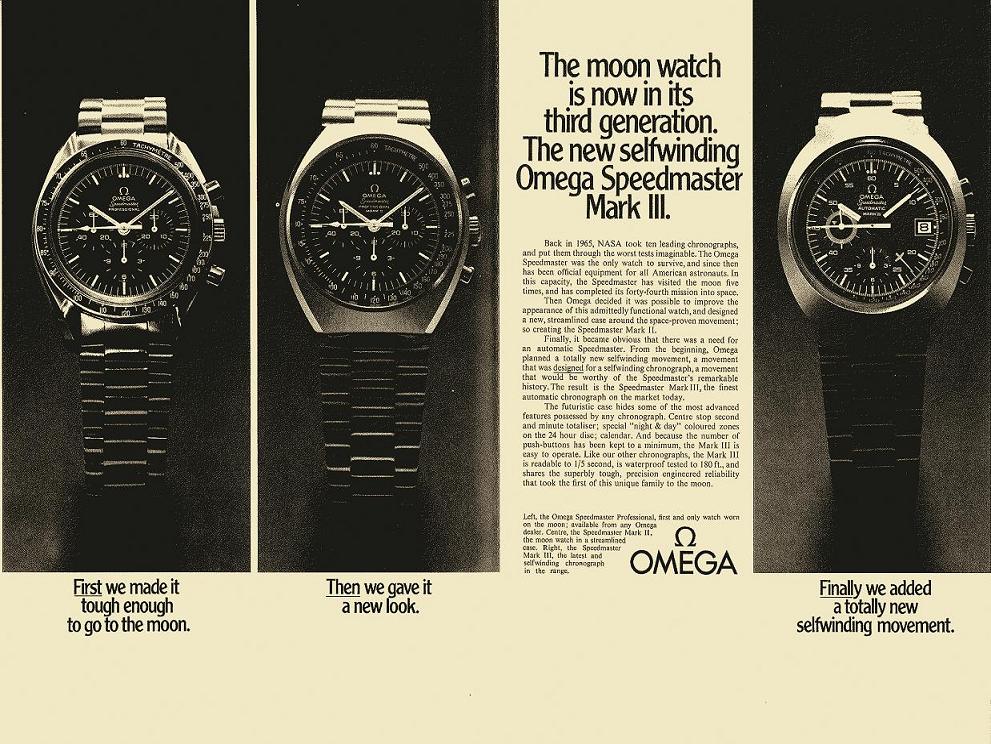
Speedmaster Mark III advertisement – OmegaMuseum.com
Strange case
Although technical assets probably were key in the highly innovative and competitive 1970’s watch industry, the humongous Omega Speedmaster Mark III watchcase must have been the eye-catcher for the consumer. This metal chunk of a timepiece is like punk to classical music. I fell in love with it watch in the late 1990’s, when I started studying the rather neat Speedmaster family. Okay, there is a somewhat funky dial in the Mark II racing version and there are gold Speedmaster Professional watches, but let’s be honest: the rest of the Speedy family is modest, reserved and silently stylish. Except the Omega Speedmaster Mark III. Mark III is the kid that never listened, who left the house years before his 20th birthday and who caused his parents the most headaches and worries. It is also the most intriguing one. It is a scion from the so-called pilot-line that is present throughout the 1970’s Omega collections.
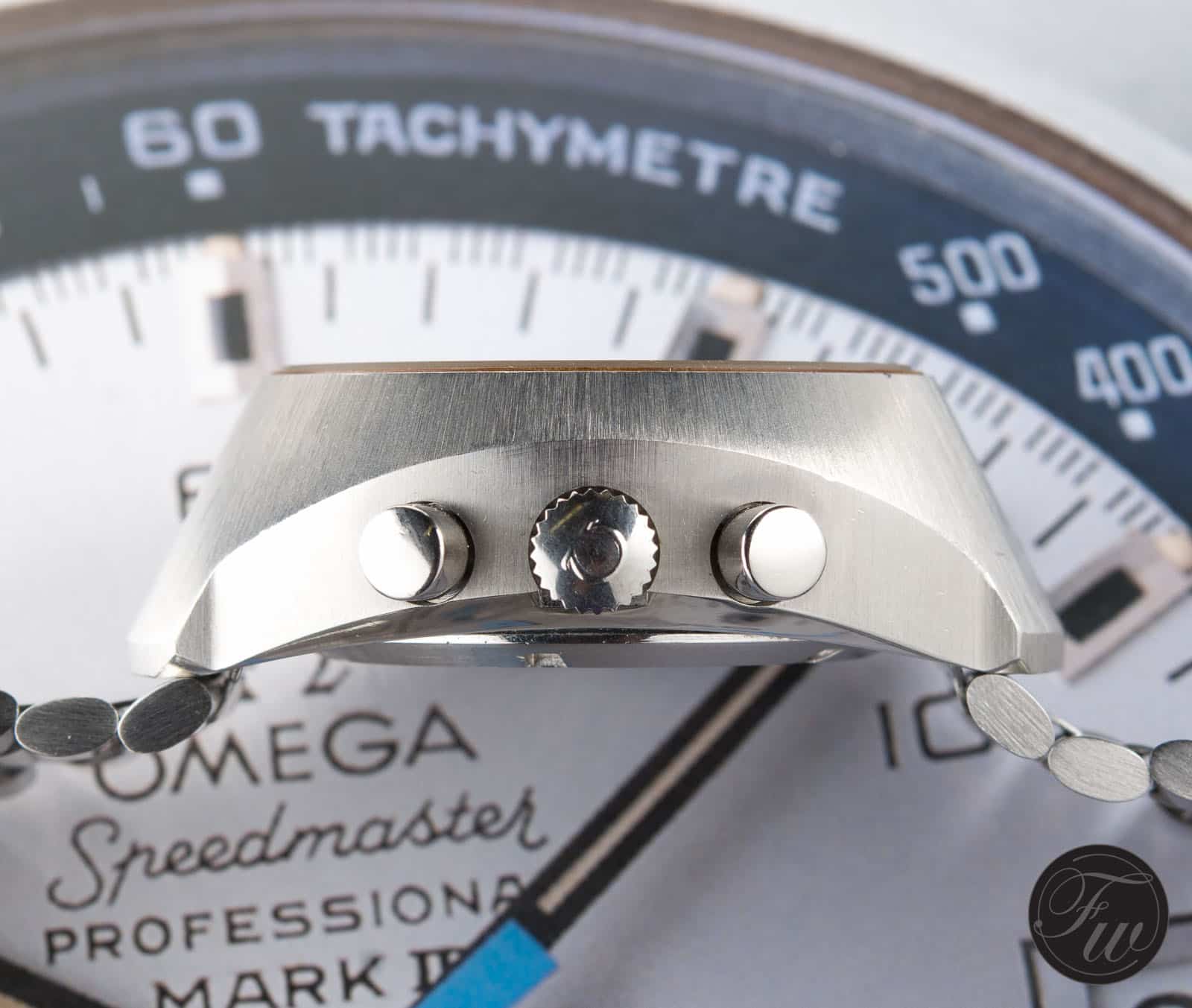
Pilot-line
Pilot line refers to Omega’s Flightmaster (1969). It is unclear whether the Flightmaster was the very first Omega with this type of case, but it certainly was one of the first. The Omega Speedmaster Mark III case is significantly bigger. According to a watchmaker, the huge case was developed to house the exceptional height of the automatic chronograph movement 1040. The book ‘Journey Through Time’, refers to this case-type as ‘monocoque’ and it appeared for the first time in 1970’s Seamaster Automatic 200m (ST 166.0091) and later in the 1971 Seamaster automatic 1000m (ST 166.0093). Both were not chronographs. The now famous Omega automatic Seamaster 120m (ST 176.0004) – better known as ’Big Blue’ – also features the big case (the first diver chronograph with pushers able to operate at depths up to 120 meters; it features calibre 1040).
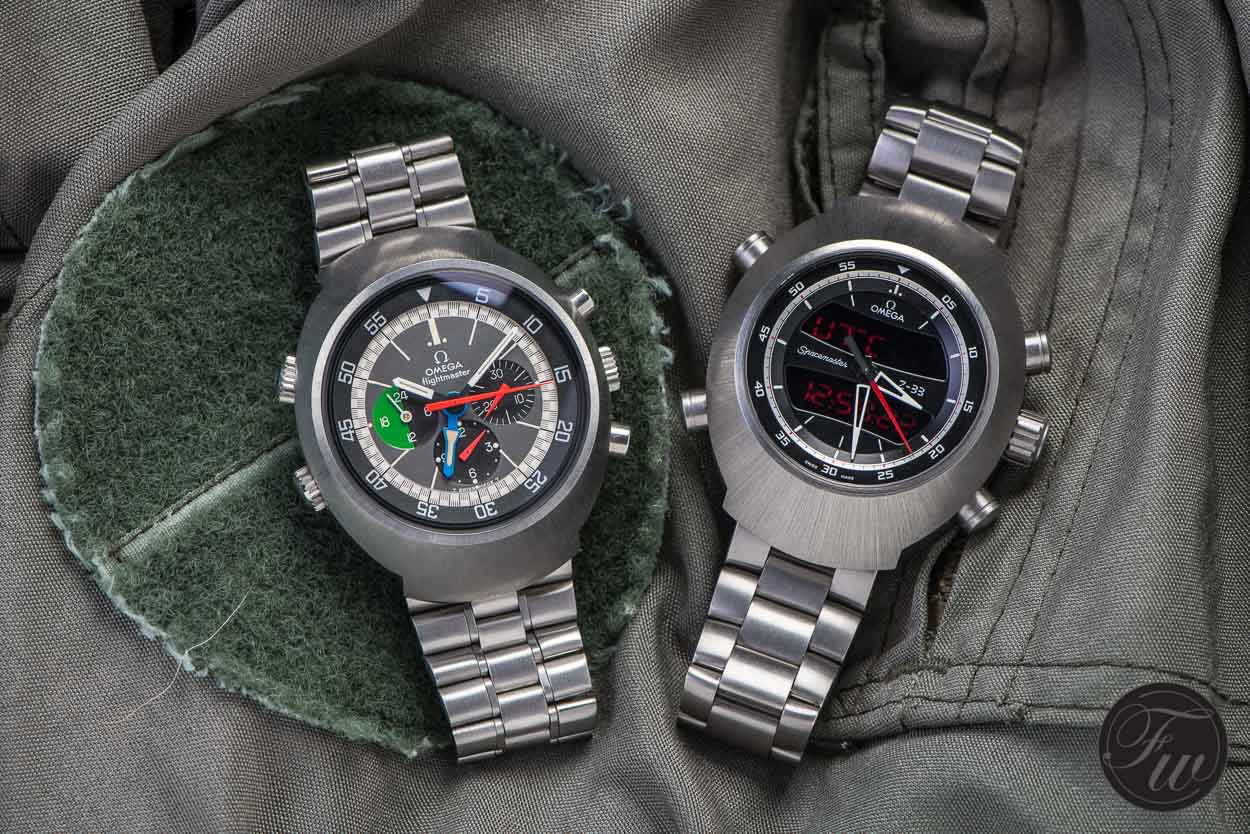
Flightmaster and Spacemaster Z-33
A case oddity
During the 1970’s Omega used these big, chunky cases for several watch types, chronographs and non-chronographs, including the ‘tv-case’, the remarkable big and edgy ST 145.0023 chronographs, now known for their Star Wars related nicknames (1970), the Memomatic (ST 166.071), the Seamaster ‘Football’ (st 145.024) produced in 1971, reissued in 1973 for inaugural World Football Day in Barcelona and the Speedmaster 125 (ST 378.0801). Even the Speedsonic or ‘Lobster’ case (ST 388.08000 en ST 188.0001) from 1974 can be considered a member of this odd family. Even compared to the complete 1970’s watch production, this family stands out for its exceptional huge cases – especially the Omega Speedmaster Mark III.
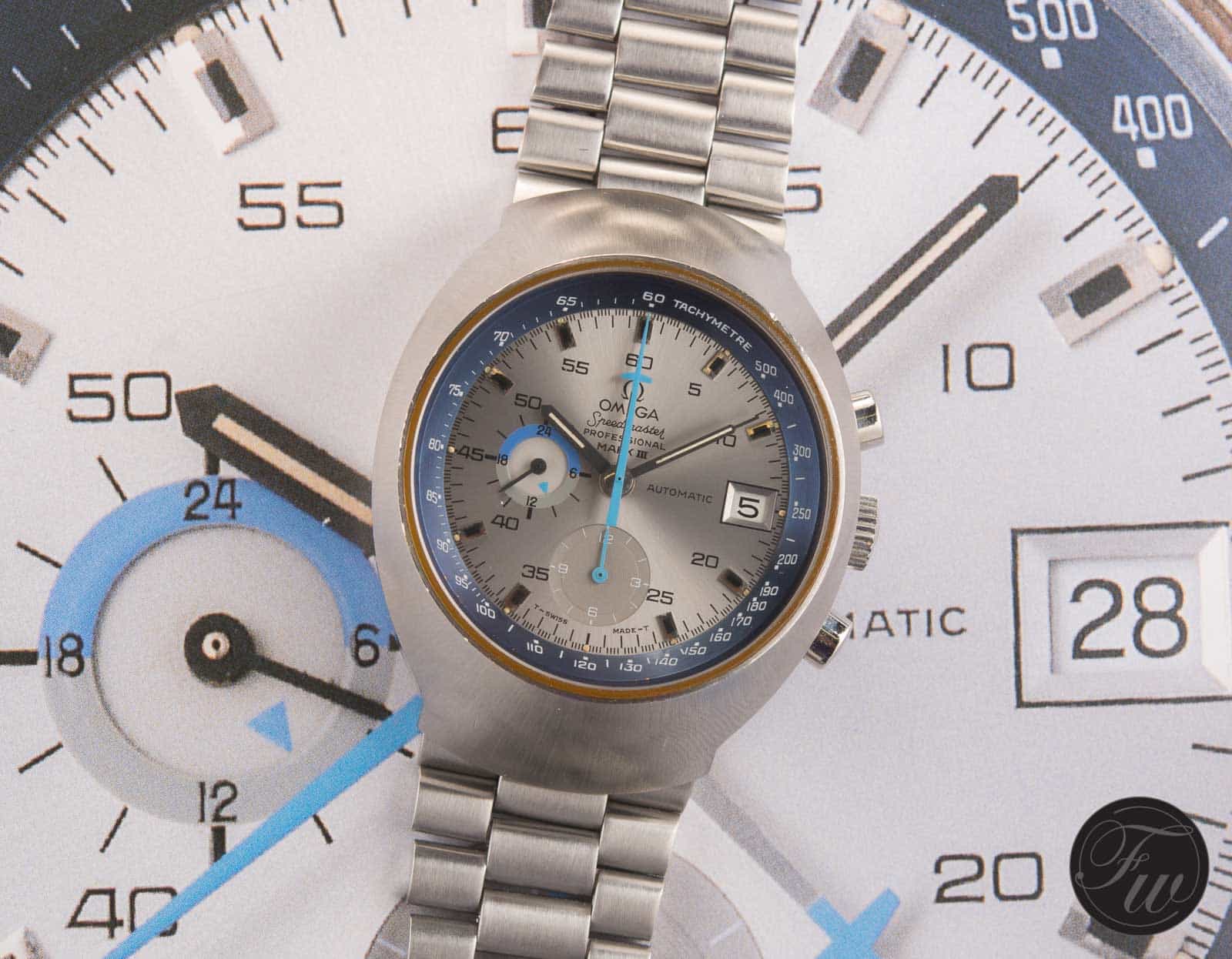
The Omega Speedmaster Mark III is not only big, it is also heavy with a weight over 157 grams. Even today it still is one of the largest cases Omega ever made, however not the heaviest. That credit goes to the gold Flightmaster (BA 345.0801), weighing 250 gram. The Omega Speedmaster Mark III was discontinued in 1973 (from 1974 the 176.x reference number no longer appear in production year lists). In 2014, the remarkable pilot line case-type returned in Omega’s titanium Spacemaster Z-33, blending the chunky 70’space age looks of the Flightmaster and the Mark III, with modern-day time recording and displaying features.
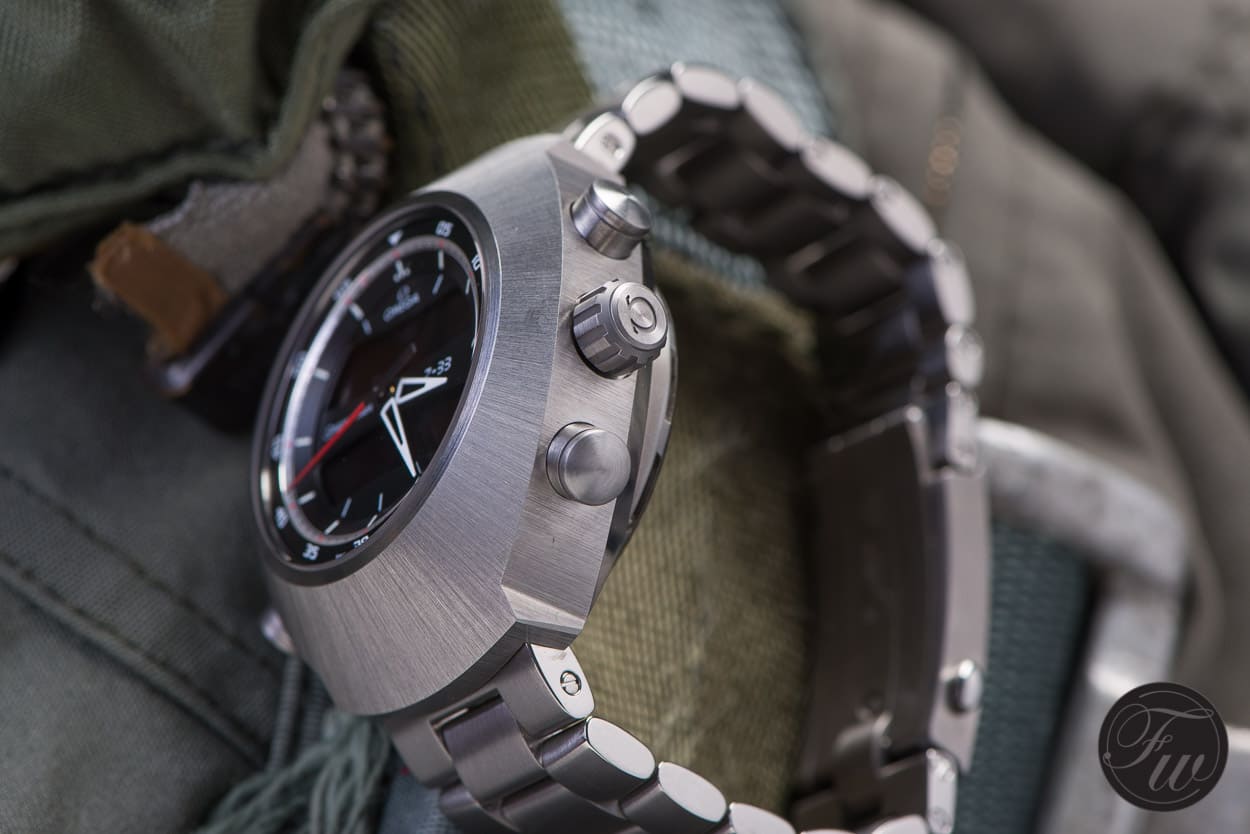
Z-33
Inconsistent
There is a lot of fuzz in Mark III watches. The dial colors and movement has been used for various models. They share the same DNA, but there is something inconsistent about them as a series. There is a version with the Pilot Line case, there is a ‘TV-case’ version and there is a flat case version. The only thing consistent is the movement (1040). Dials appear in different colours in different cases and may have variations in details, such as the colours and writing:
- Pilot case (ST 176.002), steel only; black, blue and grey dial;
- ‘TV-case’ (ST 176.0005), steel and gold plated; blue, grey and gold dial;
- Flat case (St 176.007), steel and gold plated; blue, grey and gold dial.
Also, there was a variety in bezels (under the crystal!). Some have a Telemeter bezel, others a pulsometer or decimals bezel.

Black dial Speedmaster Mark III
The Mark III dial
The Mark III appeared in three case types and with four different dial colours: black, blue, grey and gold. The golden version never appeared in a pilot line case. The Mark III with a grey dial is the most rare version of this watch; black and blue dials are more common. The black dial version is most common, while the blue dial version may be the most striking, with its orange hand and light blue details.
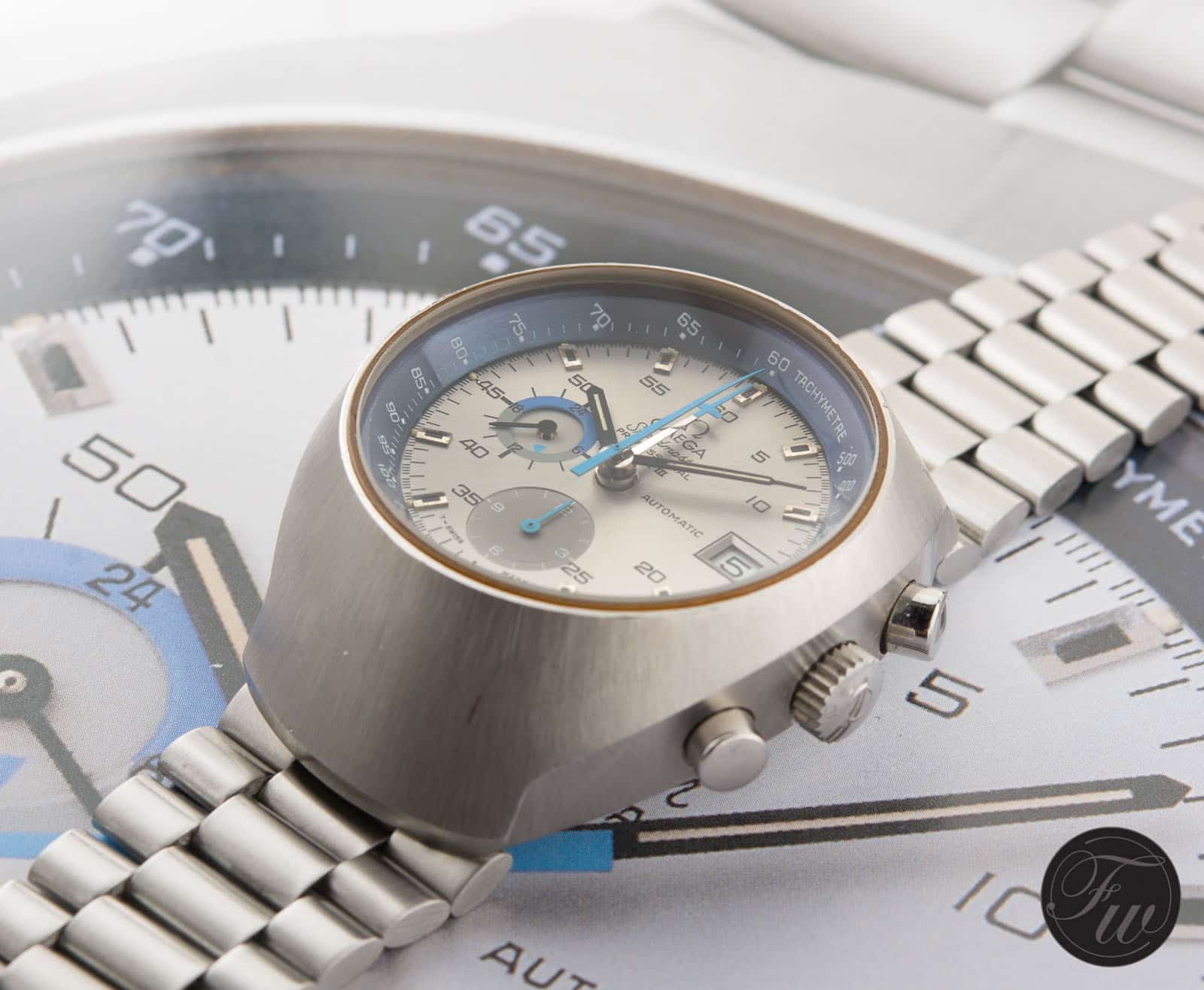
Professional or not?
A closer look into the Omega Speedmaster Mark III watches shows several variations of terms on the dial. All have the word ‘automatic’ and most have ‘Speedmaster’. There are identical watches having ‘Seamaster on the dial. An interesting detail is the addition of the word ‘Professional’. This qualification may have been added only to the versions produced after 1973: the Speedmaster chronograph automatic Mark III. Due to addition of the word ‘Professional’, the word ‘automatic’ was moved to 3 o’clock.
The Mark line
According to the Omegamania auction guide (2007), Omega launched the Mark-series after the first moon landing to offer the market a model more in keeping with the fashion of the time, to compliment the already popular Moonwatch. The name ‘Mark’ was used to indicate a forthcoming series (II, III etc.), suggesting improvement and progression. Given the variety of case types, dial colours, bezels and straps, the Mark-series may have been adapted to fashionable trends such as larger or deeper cases. Later in the 1970’s, the Speedmaster Professional Mark III evolved into a MARK IV and V (ST 345.0803, German market only), which had thinner cases (approx. 45 mm). ‘Mark’ disappeared over time, but in 2014 the Speedmaster Mark II returned with a co-axial movement.
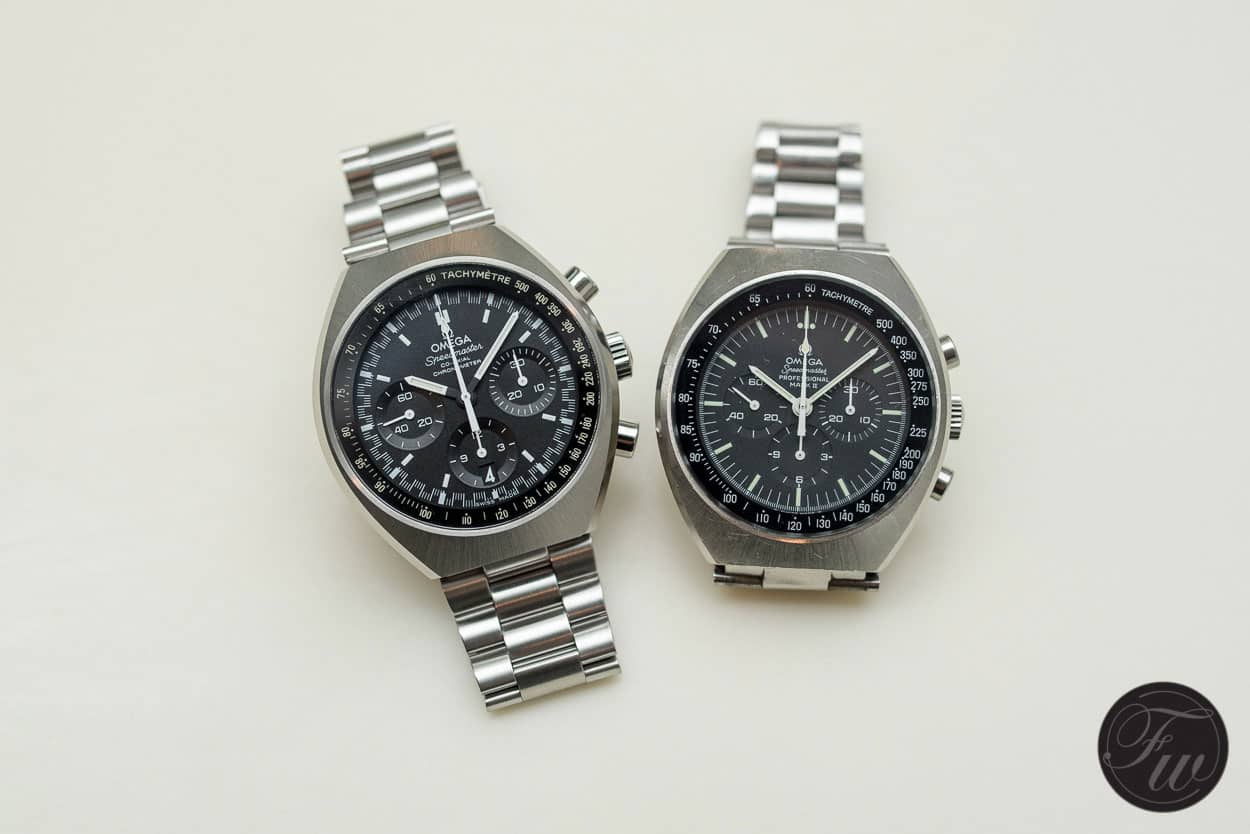
Speedmaster Mark II 2014 and Speedmaster Mark II 1969
Collecting
Vintage watches are hot. This includes the vintage Speedmaster watches of course. Prices have increased over the last couple of year, especially of the Speedmaster CK2915 and all of its descendants of what later became the Moonwatch. The Mark-series also increased, but not as steep as the Speedmaster ‘Moonwatch’ models. The Mark II revived a bit when the new Mark II Co-Axial was introduced in 2014, prices went up from under €1000,- till twice that amount easily, if in good condition. Omega Speedmaster Mark III watches can be found for around the same price, approx. €2000. Depending on the version and condition. Not only is the Mark III a 1970s landmark, it also bears a very interesting chronograph movement. We feel that the prices haven’t gone through the roof, especially those of the Mark-series. You will buy a lot of watch for the buck.
The pictured grey dial Omega Speedmaster Mark III is for sale. For more information on this watch, please contact us via this form.










